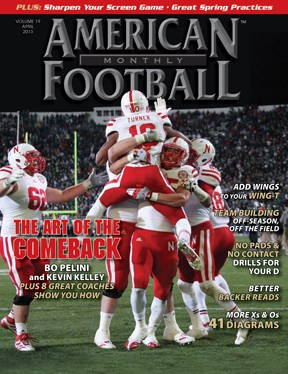Article CategoriesAFM Magazine
|
Speed Report – Weight Training for Speed in a High School Environment - Part IIby: Dale BaskettFootball Speed Specialist © More from this issue The Squat We will squat twice per week with one session being heavy and one session being light and dynamic. On our light and dynamic day, we will squat with tremendous speed. I am not concerned with the amount of weight on the bar. I am only concerned with how fast we move it. I will not let our athletes train heavier than 60% for a top set on our light days. We constantly stress a fast, dynamic, controlled....The full article can only be seen by subscribers.
|
|
|||||||
| HOME |
MAGAZINE |
SUBSCRIBE | ONLINE COLUMNISTS | COACHING VIDEOS |
Copyright 2026, AmericanFootballMonthly.com
All Rights Reserved





